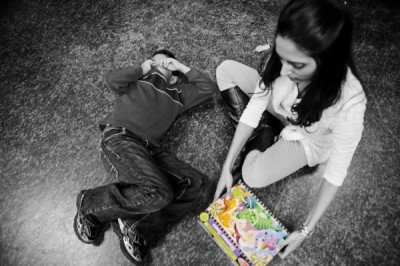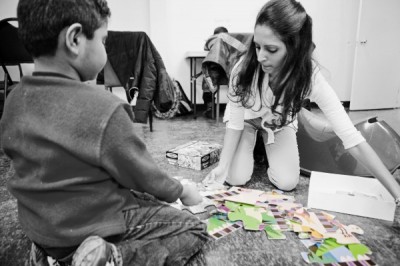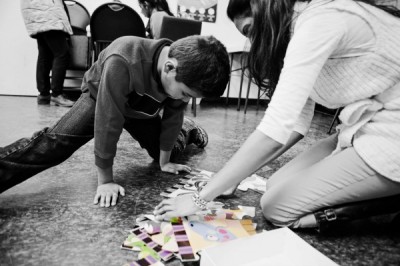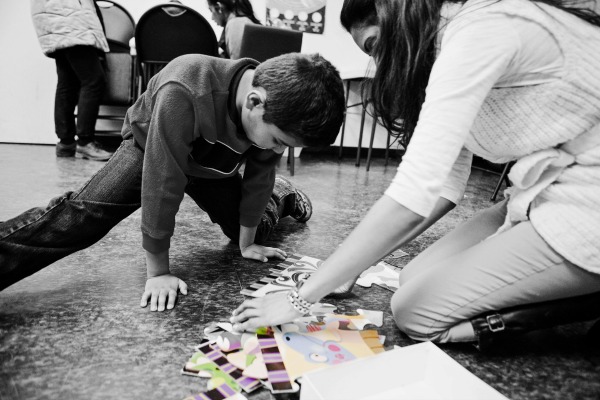By The South Asian Autism Awareness Centre

Editorial Partner
In the autism field, when we refer to “behaviours,” we refer to actions and skills. It is important to understand that behaviours are a form of communication. They have a function, and each behaviour, no matter how mild or extreme, are always trying to tell us something. The purpose of our challenging behaviour series is to understand what certain challenging behaviours are trying to tell us. By learning what these behaviours mean, we can then create strategies to help decrease these behaviours.
In this article we will look at escape behaviours, which are generally behaviours that are used to get away from situations, tasks or people.
Escape behaviours can be diverse: they can range from self-injurious behaviour with the student hurting themselves to running away from an activity. Even though the actions of these behaviours are different, they have the commonality of trying to escape from a certain situation, task or person.
 Often once the child learns to use these type of behaviours and is successful in escaping, it can quickly become an automatic response when faced with situations of distress, so it’s important we address these behaviours as soon as we can.
Often once the child learns to use these type of behaviours and is successful in escaping, it can quickly become an automatic response when faced with situations of distress, so it’s important we address these behaviours as soon as we can.
When trying to reduce escape behaviours, we first need to ask ourselves a few questions:
- Why does the child feel the need to escape?
- What is it about the situation that is causing distress?
When we ask these questions, we are encouraged to change the conditions that lead to such escape behaviours. There are many reasons why such behaviours are occurring:
- Our demands are too high
Trying lowering the demands within the situation. Your expectations for a result can’t be too high
- The child isn’t given enough support
Try providing your child an extra level of support when they are doing a new or challenging activity
- An activity is too overwhelming or frustrating
Try fading the child into the situation slowly and progressively. For example, if the child does not like circle time, maybe you can only bring them in during the last two minutes and slowly increase the minutes they are part of the circle. Fading a child into an activity acclimates the child more with a foreign concept, progressively making them comfortable.

Taking a Break
Much of the escape behaviours we see can be attributed to children not knowing how to communicate when to stop or take a break, which usually leads to escape behaviours.
There are a variety of ways to teach your child to request a break or to stop:
- You can ask them to use a picture to state stop or break
- You can ask them to use hand gestures to communicate a stop or break
If your child is verbal:
- Remind them at the start of an activity that it’s ok to ask for a break (“If you need break, say ‘break'”)
- Have breaks at predictable times and insert into your visual schedule (click here if you want to know how to build visual schedules:
[vsw id=”K0xeKPOpd0A” source=”youtube” width=”425″ height=”344″ autoplay=”no”]
When your child uses any of these methods during an activity, reinforce them right away by stopping the activity and honouring their request for a break. Initially, they may ask for breaks a lot and at inconvenient times. It is still important to honour those requests as much as possible during the teaching phase.

Remember there are a lot of strategies you can use to help decrease inappropriate behaviours but the key is to be patient and consistent. With time, you will see a difference.
Learn more about Challenging Behaviour Series: Escape Behaviour.
The South Asian Autism Awareness Centre (SAAAC) is a registered charity that grew in response to the culture of shame, stigma, and silence associated with autism in the South Asian community. Founded in 2008, we quickly evolved to cater to diverse communities and families across the Greater Toronto Area (GTA), providing accessible, cost-effective and discipline-rich management of Autism Spectrum Disorders (ASD) among children and youth.
SAAAC aims to develop a vibrant, open, and inclusive community composed of families, caregivers, and community members who are well equipped to handle the challenges presented by autism.



There are no comments
Add yours